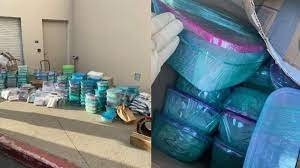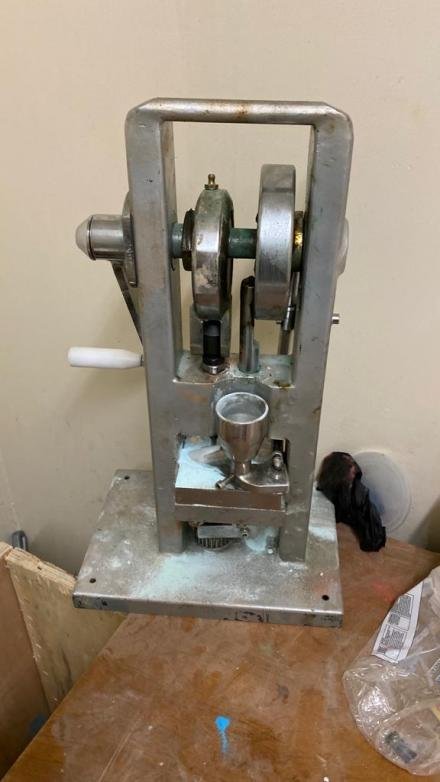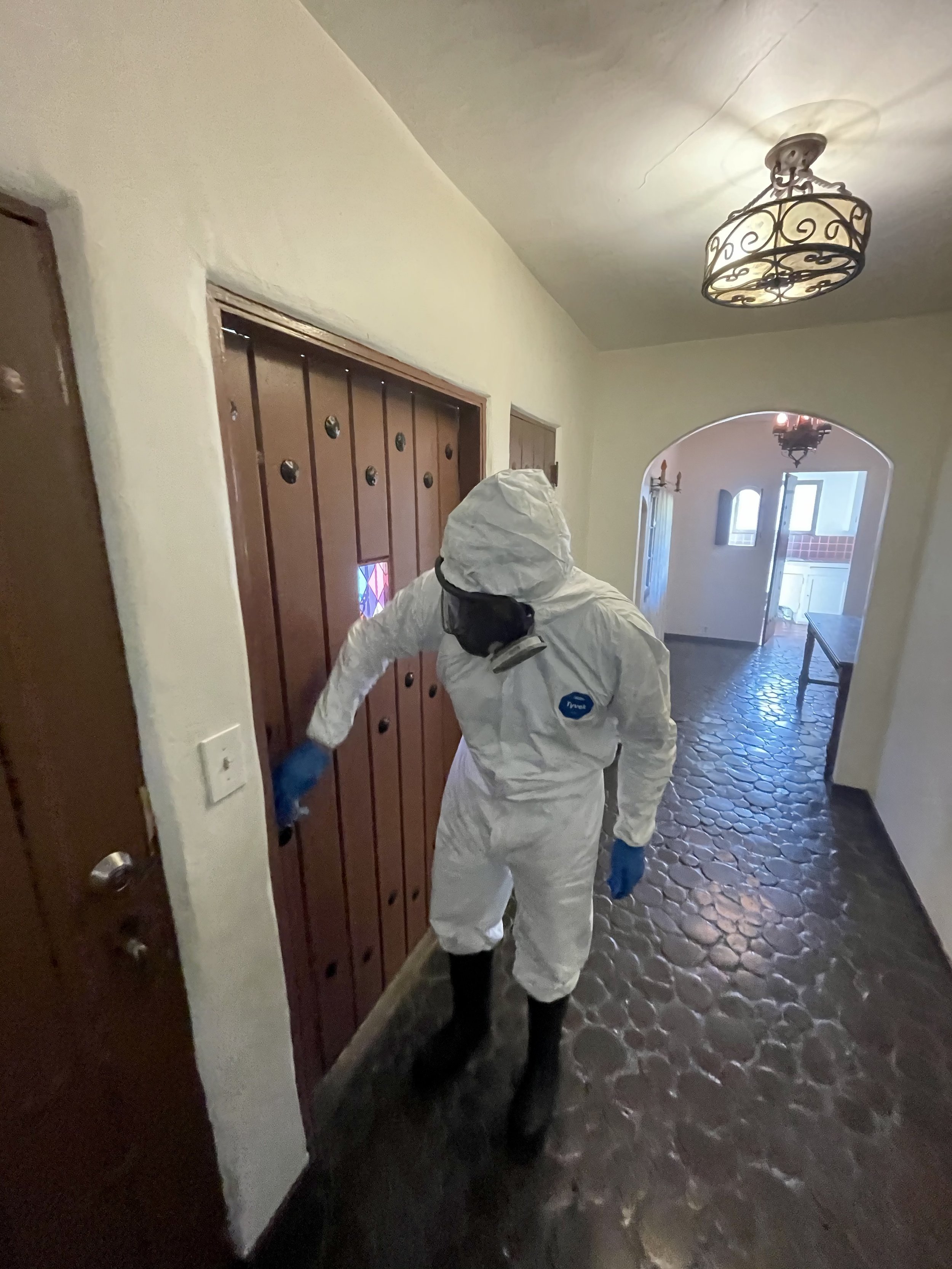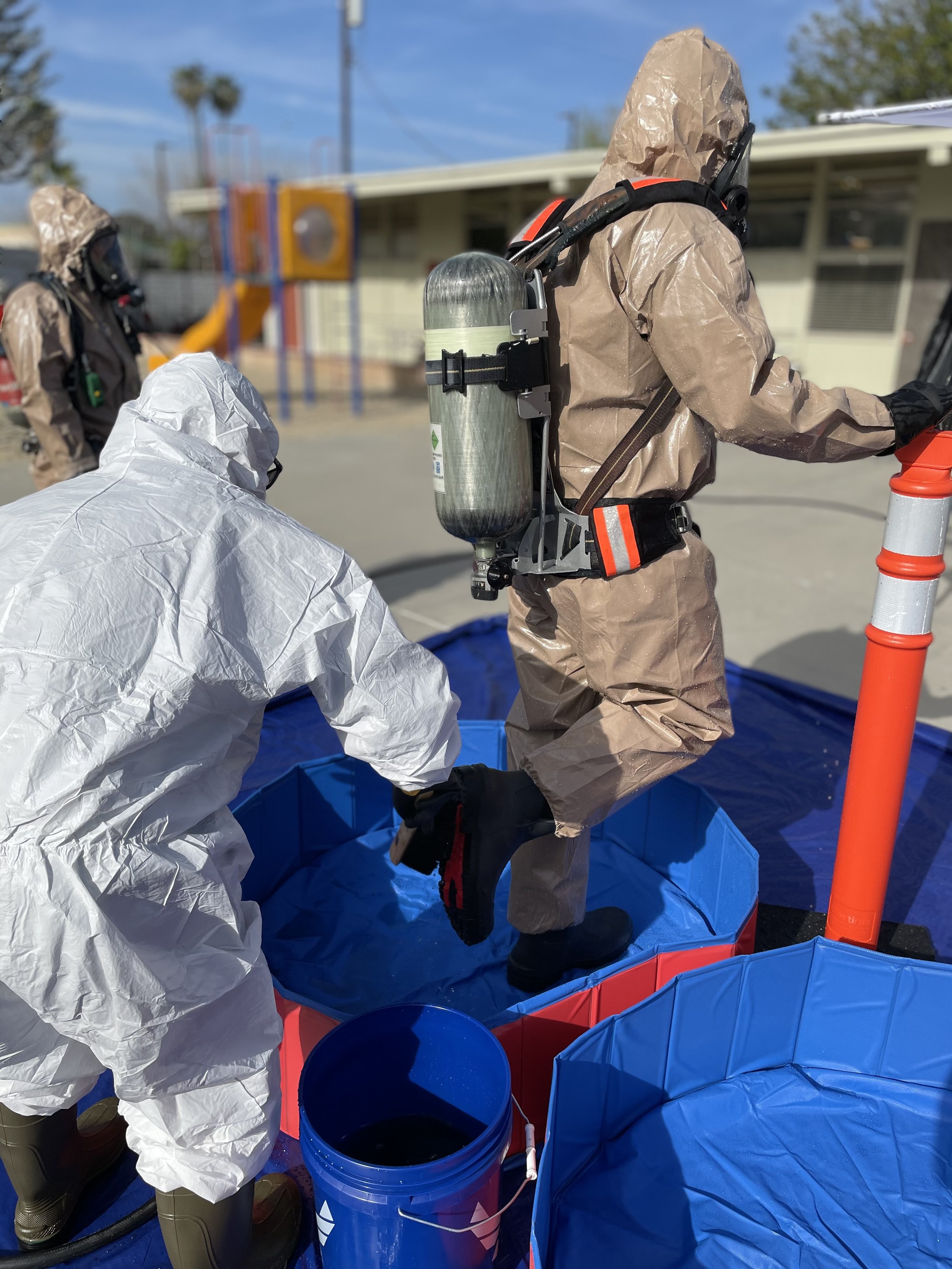Fentanyl - The Untold Story
The Ramifications of Fentanyl Beyond the Death of a User
In early April, the Orange County District Attorney’s Office in Southern California, filed felony charges against two drug dealers in the largest bust in the county in 16 years. On March 17, Buena Vista police officers stopped the pair outside a home as they were driving away in a minivan. It was packed with 822 pounds of meth, 89.7 pounds of cocaine, and the biggest killer of them all, 20.5 pounds of illicit fentanyl pills destined to be sold as counterfeit opioids or likely crushed and cut into cocaine, meth, or heroine.
The District Attorney estimated that given the lethal dose of fentanyl—a minuscule 2 milligrams—the haul had the potential to kill 4.7 million people. “Fentanyl is cheap, is easy to get and it is killing our children, our coworkers and tens of thousands of innocent Americans,” says County District Attorney Todd Spitzer in a press release on the matter. He urges caution: “Millions of unsuspecting people have the grim reaper looking over their shoulder, and they have no idea how close they actually are to dying from taking a single pill.”
An additional concern when dealing with fentanyl is the accidental exposure by an innocent bystander. This is rare but does occur even though groups who are pro-legalizing illicit drugs will say otherwise. The reality is, illicit fentanyl like the analog carfentanil is approximately 100 times more potent than pharmaceutical grade fentanyl and 10,000 times more potent than morphine. Individuals who have not built up a tolerance and accidentally inhales or ingests this illicit drug can be fatal.
While deaths of fentanyl users increasingly make the headline news, rarely if ever are there the untold stories of those responsible for decontaminating a property to make it fully safe and habitable.
A Dunk in the Deep End
In 2020, Greg Gleeson, who co-owns 200 units in Southern California with his brother, gets disturbing news from their property manager. He calls to inform Gleeson that the San Bernardino County Fire Department red tagged one of their rental units where two people overdosed and a third victim was in the hospital.
Gleeson rushes to the scene and is shocked by what he finds.
“There were people in hazmat suits,” he says. “I thought, was somebody there using nuclear material and making bombs or something?”
In essence his rental unit morphed into a hazardous waste site.
“The police told me that these guys were cutting illicit fentanyl pills in the apartment,“ he says. “They probably inhaled the fentanyl powder, and it killed them. That’s when I discovered that a small amount of fentanyl like a grain of salt could be lethal.”
That was only the beginning of Gleeson’s nightmare, or, as he describes it, his “dunk in the deep end.” The property was impounded and red tagged by the fire department. It was determined that it needed a complete remediation by a professional crew before the unit could be deemed safe and habitable.
Northern California Twin Deaths
On June 7, 2019, a victim of fentanyl poisoning is found seated in front of a TV with the remote still in-hand in his 2,800-square-foot residence in Northern California. The potent dose of the illicit opioid hit this victim so fast he had no time to call for help as his life came to a tragic end.
Local police and the Coroner’s Office examine the death site. After a brief inspection, they conclude it was a run-of-the-mill overdose or cardiac arrest. No crime was involved. Case closed. The autopsy was minimal, and the lab tests were sent to a testing site in Pennsylvania, but the results were not readily available.
A week after his death, the case is reopened after an unsuspecting house cleaner loses her life while vacuuming the site where he died. It was later discovered that fentanyl was the source of the original overdose as well as the cause of death of the house cleaner.
After the home is red tagged by local authorities, testing begins by a Certified Industrial Hygienist which shows that traces of fentanyl is found throughout the home.
Two weeks after the house cleaner’s death, lawsuits against various parties are filed. A trust company, which represents the owner of the property, hires lawyer Mac Prout from the Borton Petrini law firm.
“I’ve been involved in cases for more than four decades, but I’ve never encountered one as tragic as this,” says Prout, explaining that lawsuits are still in litigation. “It has affected the recreational drug user’s entire family as well as the deceased house cleaner, whose two young girls lost their mother. It’s an unadulterated case of the beast of addiction. Top to bottom, this was incredibly senseless.”
The Untold Story
These narratives are only two examples of thousands of casualties from the ruinous fentanyl epidemic sweeping our nation.
The heart-wrenching stories of how heroin, cocaine and opioid addiction take lives and devastate those in the wake of overdoses are all too familiar. But as shown in both these California communities, today users and law enforcement across the country are grappling with an unprecedented crisis fueled by a lesser known but even more lethal substance: synthetic fentanyl. Largely manufactured in Mexican labs from chemicals imported from China, fentanyl is smuggled across the U.S. border and sold on the black market for enormous profit.
While overdoses make headline news, what’s blatantly overlooked and unreported is the consequences of overdoses do not end merely with a user’s death. The untold story: When a person has engaged in illicit fentanyl use the site may have turned into a hazardous waste site. Inhaling or ingesting a small amount of the drug can be deadly. The ramifications impact all who come in contact with the property—from first responders to those tasked with cleaning up, and at worse, those who are not aware of the hazard such as family members or even a hotel guest enjoying a relaxing vacation.
Federal Drug Enforcement Weighs In
In September 2021, the Drug Enforcement Administration weighed in on the fentanyl epidemic with a Public Safety Alert. “The United States is facing an unprecedented crisis of overdose deaths fueled by illegally manufactured fentanyl and methamphetamine,” says Anne Milgram, DEA administrator. “Counterfeit pills that contain these dangerous and extremely addictive drugs are more lethal and more accessible than ever before.”
At that point in time, more than 9.5 million counterfeit pills were seized in 2021—more than the past two years combined—with a dramatic rise in the pills packed with the lethal dose of 2 milligrams of fentanyl, according to the DEA. Two out of every five pills with fentanyl contain a potentially deadly dose—small enough to fit on the tip of a pencil.
Up to 50 times more powerful than heroin, pharmaceutical fentanyl began with noble intentions. It was first developed in 1959 by Paul Janssen, a Belgian doctor and pharmacologist, as an intravenous pain treatment for cancer patients. It was certified for palliative care by the FDA in 1968.
DEA Museum Presents: “American Crisis:Fentanyl & Fake Pills”
Based on a recent analysis of Centers for Disease Control data, fentanyl has become the predominant killer for Americans ages 18 to 45. In the past two years, deaths from fentanyl have considerably exceeded deaths from COVID-19 for this age group. Recently, the United States Centers for Disease Control and Prevention reported more than 93,000 people died of a drug overdose in the U.S. in 2020, an increase of 30 percent from the previous year. It blames the rise on the increased use of fentanyl sold on the streets. In an updated report, the agency said that more than 100,000 had died in a 12-month period ending in April, mostly attributed to fentanyl use. Drug researchers say that that number will rise every month.
Eager to make a greater profit, dealers lace commonly known drugs such as heroin and cocaine with fentanyl. This often results in a lethal cocktail for unsuspecting buyers. Those who fall prey include recreational users seeking a cheap and powerful euphoric high and addicts desperately looking for a less expensive alternative to legal, FDA-approved fentanyl.
The FDA reports that there are thousands of illegal websites that peddle counterfeit drugs (Snapchat has been singled out for its ease in selling suspect online drugs). It’s a national disaster of epic proportion that spans all socio-economic backgrounds and ages and increasingly infiltrates all regions of the country.
In October 2021, the DEA announced at a press conference that within the previous eight weeks it arrested 810 traffickers in the criminal drug distribution networks across the U.S.
Deputy Attorney General Lisa O. Monaco says, “The pervasiveness of these illicit drugs, and the fatal overdoses that too often result, is a problem that cuts across America from small towns to big cities and everything in between.”
“The fentanyl-laced fake pills seized by the DEA could potentially kill more than 700,000 Americans,” says Anne Milgram, administrator of the U.S. Drug Enforcement Administration. At the press conference she added, “I urge the American public today to talk to their loved ones about the threats and dangers of fake pills and the simple fact that one pill can kill.”
Today, many investigators point to the onset of Covid-19 pandemic when people increasingly bought drugs through the Darknet which had already become a lucrative drug-selling underground business. Much of the drug sales took place on social media platforms. Most of the fake pills were laced with fentanyl.
In 2021, the DEA helped to launch the massive 10-month Operation Dark HunTor that traced drug vendors running laboratories at home. They were creating illicit pills laced with fentanyl. In the U.S., the operation alone seized more than 200,000 counterfeit pills.
Hidden Dangers of a Fentanyl Cleanup
Cleaning up fentanyl at a contaminated property is a daunting challenge riddled with complex issues. Making a place safe again entails adhering to strict safety protocols, including testing, hiring a certified industrial hygienist and a qualified hazmat trained cleanup crew.
The most important factor is to hire a crew of professionals to make certain that the remediation is done safely. That’s the main challenge companies in the remediation business face.
In 2003, Joe Mazzuca and his wife Julie founded Meth Lab Cleanup Company with the intent to primarily clean up contaminated properties that were used as labs for manufacturing methamphetamine “meth” for the black market. (It’s estimated that there are still 2.5 million meth lab sites in the U.S.)
Since then, their Florida-based company has become the leader in cleaning thousands of sites contaminated by meth. In recent years, Mazzuca has seen a big shift in the illicit drug market.
“In the last 18 months, we’ve seen a huge trend of overdoses of meth users who were using drugs cut with fentanyl,” he says. “It’s a hazardous material. On most of the sites we service, there’s been a rise in deaths just from handling the drugs. It doesn’t take much to overdose. We test for both meth and fentanyl to make sure a space can safely be inhabited.”
Mazzura’s clean-up reputation has led him to train hazmat professionals around the world. Jon Schibsted, a former firefighter for Los Angeles, received extensive training from Mazzura to handle clandestine lab cleanups.
Schibsted founded Safety Services Management, LLC (SSM), a Southern California-based company that specializes in meth and fentanyl cleanups. His team was hired for both the San Bernardino and Northern California properties which we will later review.
Often times porous items need to be naturalized and then discarded to ensure hidden traces of fentanyl are removed.
“My primary objective is to educate property owners and inform them about the dangers of a site contaminated with fentanyl and how important it is to have it cleaned properly,” he says. “If property owners are blindsided by a fentanyl death and do not take the proper steps, others could be tragically exposed, rental incomes could be wiped out for months and lead them wide open to possible lawsuits.”
Schibsted notes that because fentanyl is such a cheap drug for mixing with other narcotics, its manufacturing reach is widespread. “This is the real danger,” he says. “It’s occurring in hotel rooms, apartments, houses, garages and storage facilities which can cause widespread contamination that the general population can be exposed to.”
When a local public health unit responds to a fentanyl fatality and determines that the property needs to be red tagged due to fentanyl contamination, all traces of fentanyl must be removed. This begins the nightmare for many property owners. Some agencies such as the San Bernardino County Fire Department give the owner a packet that includes the cleanup process and information about contractors approved to handle this specialized remediation. But oftentimes, the property owners are left on their own to find the appropriate resources.
“The cost is huge,” says Dwane Pianalto, a Southern California Registered Environmental Health Specialist (R.E.H.S). “Such a substantial cost for a hotel, for example, means loss of rental income. If a site is red tagged, the law states no further occupation is allowed until the remediation is completed. The whole process could easily take up to 90 or more days.”
Once a site has been red tagged due to fentanyl, a Preliminary Site Assessment is created by a trained professional such as a certified industrial hygienist. The hygienist takes samples of the site and provides recommendations on cleaning. “We prefer to work directly with the hygienist at the beginning of the process to ensure they sample the site to paint a clearer picture of what needs to be cleaned,” says Schibsted. “If it isn’t done correctly, it can lead to a much higher cleanup cost.”
SSM often uses certified industrial hygienist Joe McCaffrey in Southern California. “I started working on methamphetamine cases, but fentanyl cases are increasing,” he says. “Various surfaces inside the residence are sampled for fentanyl contaminants. Sampling usually includes walls, floors, furniture, appliances, HVAC systems and areas that appear to have been impacted by pill presses, smoking or drug cooking activities.” Those samples are then analyzed by an accredited lab that provides the results of contamination.
When fentanyl is in powder form, McCaffrey says, “I advise neutralizing the drug with a solution such as Decon7 or Dahlgen, an oxidation-based cleaner, then follow up by using a vacuum with HEPA filters to remove all the small particles. Then we test again to make sure the property is safe to reoccupy.”
Nightmare Remediation No. 1: San Bernardino
Crews preparing to make entry into Gleeson’s rental property.
Greg Gleeson calls his ordeal a nightmare. He had to move people out of adjoining units, which meant a hit in income for rentals. He then had issues with his property insurance company that rarely covers damages from drug abuse.
Gleeson hired Schibsted’s company to clean up the unit. “There were some other remediation companies, but I went with Jon’s company, Safety Services Management,” he says. “As a former firefighter, he knew exactly what the fire department required. They got the job done, but then there were delays on getting the unit remodeled to rent again. The whole process took over a year to complete. All said, it cost us a small fortune.”
As for his recommendations to other property owners, Gleeson says, “So much fentanyl is coming through Mexico, so Southern California is being hit hard. More is coming in, so be prepared. Check your insurance, have a rolodex of cleaning crews and be ready to hire one to fix the whole mess.”
Nightmare Remediation No. 2: Northern California
After the second death at the Northern California property, inspectors found an abundance of fentanyl residue throughout the house.
Built-in cabinets with darkened glass windows were discovered in the wall in the television room. Drawers in other rooms revealed more visible evidence of contamination.
Due to the tragic loss of two individuals over a 7-day period, the home was red tagged to only allow hazmat trained personnel to enter the property to ensure this tragedy doesn’t repeat.
This particular property was red tagged for a period of over two and a half years from the horrible events that started in June 2019. The lack of clear regulations when dealing with fentanyl contaminations has been a key contributing factor creating confusion on how to deal with these types of properties which can turn into a litigation nightmare.
Decontamination Process
Crews vitals are taken before, during and after they make entry into a fentanyl contaminated property.
“Safety is our highest priority,” Schibsted says. “We not only train our employees on how to remediate the site but also plan for the worst-case scenario. A worker can go down in a hazardous environment in seconds. I train my crew on how to rapidly extract an unconscious worker from a hazardous environment and how to provide life saving measures.”
At every step during the initial cleaning phase, the work is slow and dangerous.
Crews use decontamination solution to neutralize illicit fentanyl.
“We attack and neutralize the area known to have fentanyl which is often in a powder form,” Schibsted says. “When you first make entry into the site, it’s essential to avoid stirring up particles which could contaminate the workers and their equipment. The goal is to isolate the fentanyl to keep it from spreading, then begin the cleanup.”
Once the known contaminated areas are neutralized, SSM applies a low-pressure sprayer to spray areas of concern with a decontamination solution. Most porous items are discarded, and the valuable non-porous items are cleaned. Removing the decontamination solution is done by using a pressure nozzle and extractor to rinse the ceilings, walls and floors. Once all the surfaces are dry, the entire site is then vacuumed with a commercial grade HEPA vacuum. This process at may at times need to be repeated before all traces are removed.
“To ensure the place is safe to reoccupy, we run multiple tests which detect trace levels of fentanyl,” Schibsted says. “Depending on the level of original contamination, we will then have an industrial hygienist return and review our cleaning process and take post cleaning lab samples.”
Decontamination Challenges
The science is there, but state legislations have been notoriously slow to respond to the epidemic. Currently, California, is the only state that has established cleaning standards with a fentanyl detection level. It’s a start but nowhere near the 2007 federal Methamphetamine Remediation Research Act that established guidelines for meth lab cleanup in response to the addiction problem. For the most part, states have not addressed the fentanyl cleanup problem—even though fentanyl poses one of the greatest threats to public health.
In a more recent report in 2021, the EPA published a 64-page booklet “Voluntary Guidelines for Methamphetamine and Fentanyl Laboratory Cleanup.” These are “voluntary guidelines,” published by a governing agency that specializes in protecting the environment, not humans. The EPA got the ball rolling, but it’s disappointing that agencies that focus on protecting human health have not stepped up like the EPA to reduce the chance of a secondary exposure.
As might be gathered, fentanyl cleanup can be enormously expensive which could potentially lead to cutting corners in full remediation. In St. Louis, Missouri, a rental car was being used to transfer drugs. One bag containing fentanyl ripped open in the trunk. The company called a decontamination company which quoted $30,000 to complete the cleanup. Because there were no cleanup requirements by law in Missouri, the rental car company cleaned the car itself. The price was less costly but easily could have put the workers and future renters in grave danger at the cost of rental car profits.
With a policy vacuum on the safety dangers of illicit fentanyl, the public’s safety is at risk for all people in all states. The owners of properties could be sued if a future resident succumbed to a fentanyl exposure that wasn’t properly remediated.
Crews and their equipment are decontaminated as they exit the property to eliminate accidental spreading of illicit fentanyl.
In August 2021, eight people overdosed on fentanyl cut into cocaine in small North Fork towns in the seaside East End of Long Island 100 miles away from New York City. Six died, two were hospitalized. They were all recreational users. In a New York Times news report, Timothy D. Sims, the district attorney of Suffolk County where 3,000 people have died of overdoses in the last decade, said that there had been pressures of shortages on the market which affected drug dealers. “All the while we have seen demands skyrocketing from users because of the impact the pandemic has had on them.”
The North Fork headlines were of course atrocious, but again nothing was written about the remediation of properties contaminated by fentanyl. Two dealers in Suffolk County were arrested—Lavain Creighton from Greenport, Justin Smith from Smithtown. They will be put on trial for their responsibility of these deaths and could well face a manslaughter conviction but there has been no news on the cleanup work by the narcotics division not only where the dealing occurred but also in the towns where deaths took place.
Several calls to the Suffolk County officials were not returned. Too busy? Or were those in charge unwilling to speak on the record about the issue of cleanup? Like more than twenty states in the nation, New York doesn’t regulate illicit drug cleanups. So, it’s a jump ball with the unsuspecting public most at risk from traces of fentanyl’s deadly pollution.
The pandemic could well have taken a detrimental role in the social climate that triggered the rise of using poisoned pills. Isolation, depression, fear can all play into a drug addiction.
Schibsted concludes, “My hope is that we can get the word out about how dangerous illicit fentanyl is to not only the user, but everyone that may accidentally come into contact with this deadly drug.”












